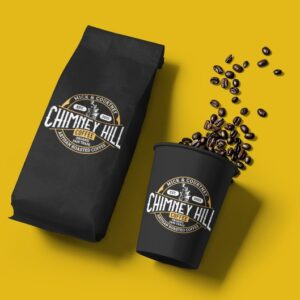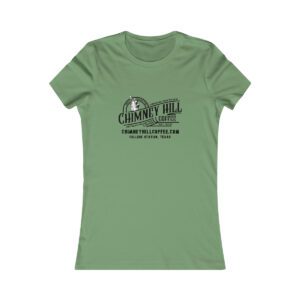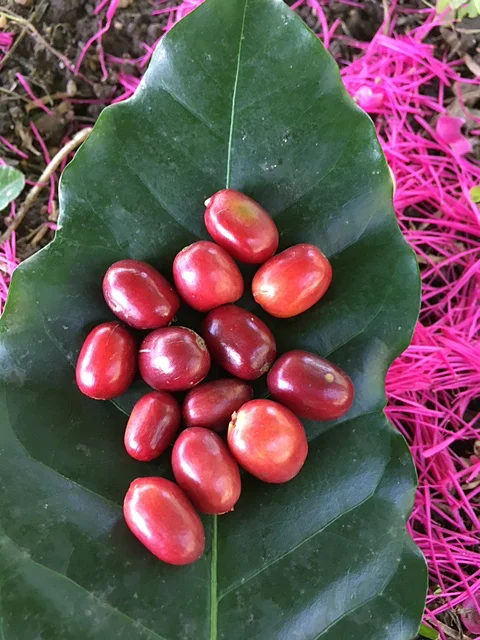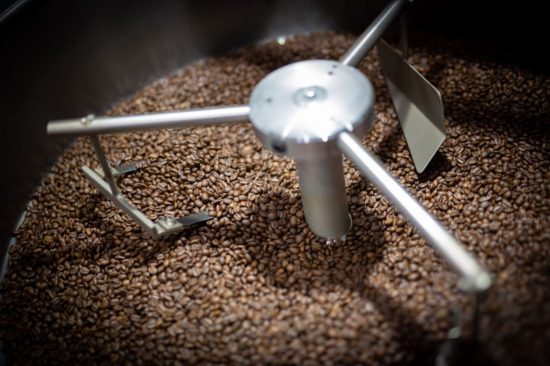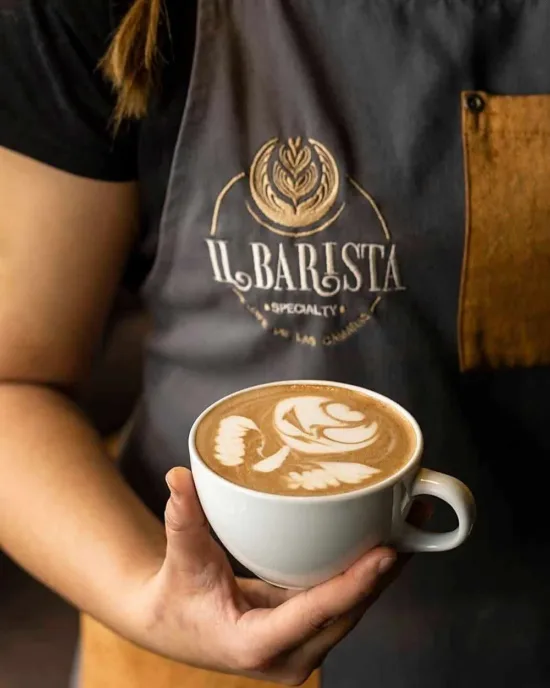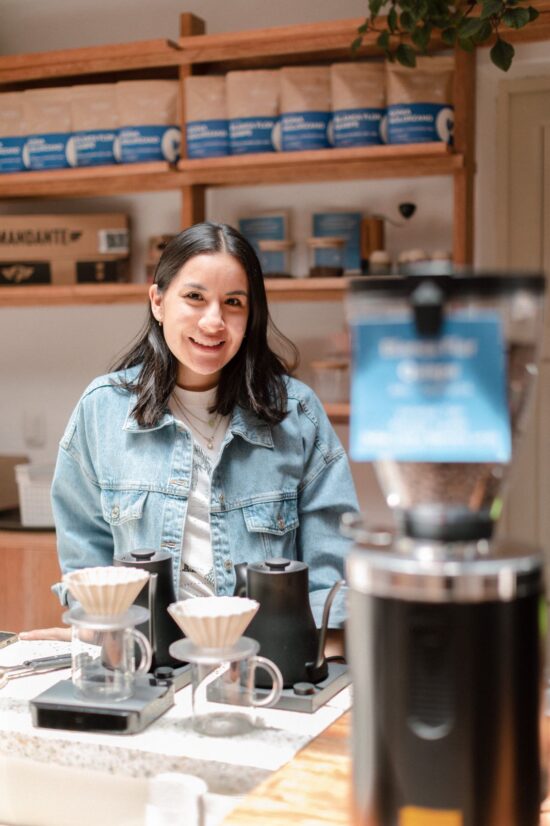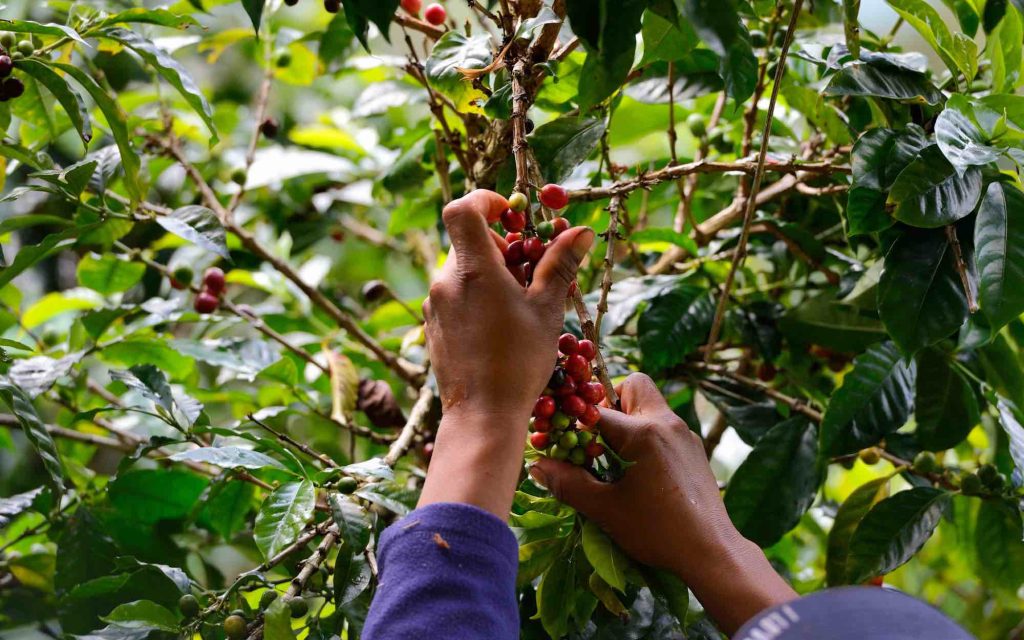The Malaysian capital is often visited in a hurry, but visitors who take the time to explore will discover a welcoming city, thanks in part to its friendly specialty cafés. BY TANYA NANETTI SENIOR ONLINE CORRESPONDENT Photos by Tanya Nanetti Kuala Lumpur, the capital...
Know Your Sweeteners: Honey: Part One
Know Your Sweeteners: Honey: Part One
Know Your Sweeteners: Honey: Part One
Know Your Sweeteners: Honey: Part One
Know Your Sweeteners: Honey: Part One
Know Your Sweeteners: Honey: Part One
Thread Coffee Roasters Opens Tailor-Made Roastery in Baltimore
The interwoven actions of Thread Coffee Roasters in Baltimore are finding exponentially more space this week with the grand opening of a brand-new production roastery and training lab. The worker-owned...
Toronto’s Pilot Coffee Roasters Acquiring Bridgehead Coffee for $3.6 Million
Toronto, Ontario-based specialty coffee roaster and retailer Pilot Coffee Roasters is acquiring Ottawa-based Bridgehead Coffee in a deal worth approximately US$3.6 million. Bridgehead, which has 21 coffee shop locations throughout...
Baking With Coffee For Beginners
This article is from the coffee website Sprudge at http://sprudge.com. This is the RSS feed version. Where to get started when introducing coffee to your bakes.
Bypass coffee brewing: How can it improve extraction?
There is a lot of science to brewing coffee. Whether knowingly or unknowingly, we trigger – and try to control – an almost endless number of chemical reactions to achieve the perfect extraction. To do so, we have to tweak different variables – such as grind size,...
Hawaiian Legislators Introduce Bills for Stricter Coffee Labeling
Legislators representing the Kona district of Hawaii have introduced a series of bills that would require more strict labeling requirements for single-origin coffees and blends containing Hawaiian-grown coffees. Some Kona...
New AFCA Director Gilbert Gatali on the 20th African Fine Coffees Conference
As the African Fine Coffees Association (AFCA) prepares for the 20th iteration of its flagship event, the African Fine Coffees Conference and Exhibition, the group is operating under new executive...
Philadelphia’s Café Don Pedro Seeks to Build Up Small Businesses
A Dominican-owned coffee roasting company called Café Don Pedro recently launched in Philadelphia with ambitions for direct trading and boosting more Latino-owned small businesses throughout its supply and distribution networks....
How much do you over-extract coffee in recipes?
This is sort of an odd question, but it's not a troll. While I love brewing specialty coffee, I also enjoy frappes (with or without ice cream). A major hurdle when using my espresso has been that while the final beverage tastes fine, the coffee is just too high...
Sprudge Maps Spotlight: Little Bear Coffee In Albuquerque, NM
This article is from the coffee website Sprudge at http://sprudge.com. This is the RSS feed version. Little Bear Coffee in Albuquerque, New Mexico.
Starbucks Will Hold their Own Barista Championship Thank You Very Much
This article is from the coffee website Sprudge at http://sprudge.com. This is the RSS feed version. The North American Barista Championship is expected to host over 15,000 Starbucks hourly workers.
What I Learned from My First Tea Ceremony
After taking in a brief moment of a tea ceremony in Thailand, I finally had the chance to participate in the full experience recently in Malaysia. BY TANYA NANETTI SENIOR ONLINE CORRESPONDENT Photos by Tanya Nanetti In the years that I worked as a barista in a café,...
Why it’s easier for wealthier producers to grow specialty coffee
It takes money – and sometimes a lot – to grow specialty coffee. Producers not only need to continuously maintain and improve quality and yields, but they also have to invest back into their farms. Whether it’s replacing equipment and machinery or planting more...
Does specialty Robusta exist?
Hello! Has anyone tried 'specialty robusta'? I work with specialty cacao, and I often observe Robusta shrubs being cultivated at lower altitudes alongside cacao trees. Some farmers are experimenting with carbonic maceration to enhance the marketability of...
[MOD] The Daily Question Thread
Welcome to the daily /r/Coffee question thread! There are no stupid questions here, ask a question and get an answer! We all have to start somewhere and sometimes it is hard to figure out just what you are doing right or doing wrong. Luckily, the /r/Coffee community...
The Sprudge Guide To Coffee Shops In Vancouver, BC
This article is from the coffee website Sprudge at http://sprudge.com. This is the RSS feed version. Where to drink coffee in Vancouver, British Columbia, Canada.
Coffee Machine (High density use)
Hi everyone, i am new in this coffee world and i am looking to buy me a coffee machine to setup a small business. I am looking for affordable machine that is good for high density use. Im open for any recommendation and opinion. Thank you guys! Here is what ive found...
Which to buy first?
Hi there, mostly a lurker until now. I'm trying to incentivize myself towards some goals and decided that rewarding myself with a better coffee set up upon reaching those goals would be great. I plan to get myself one nice thing when I reach my intermediate goal...
[MOD] The Official Deal Thread
Welcome to the /r/Coffee deal and promotional thread! In this weekly thread, industry folk can post upcoming deals or other promotions their companies are holding, or promote new products to /r/Coffee subscribers! Regular users can also post deals they come across....
The London Coffee Festival has just more than doubled its ticket price
Last year: £18 This year: £38 Unbelievable. It’s the same venue and same setup. I’m just an ordinary coffee fan and every year I spend a lot buying roasts and equipment there. submitted by /u/gahgeer-is-back [link] [comments]
Explain making good coffee to me like I’m 5.
Hi everyone, I’m not new to drinking coffee, but I’d like to start making it (well) at home myself. I’m totally clueless. I have an old Keurig that I rarely use, as well as a basic Mr. Coffee maker. Usually I buy dark roast ground coffee (I do like a good, strong cup...
Seeking instant test for rough caffeine level in coffee
About once a month, some inattentive barista gives me regular coffee by mistake, which is a bummer. I drink decaf. So when I get coffee at a cafe, I'd like to do an instant test of the rough caffeine level by dipping a strip into the coffee. Something analogous...
Questions/thoughts on cardamom-forward "thermal shock" processed coffees.
Hey everyone, Having a cup of Buttercream from September roasters and got to thinking. This is the second thermal-shock processed coffee I have had with this huge, distinctive cardamom note (The other being DAK milky cake which is also from Colombia, but from a...
Third Wave Coffee brands
Greetings to all, I am reaching out to this knowledgeable community with a query regarding the recognition of coffee brands within the third wave coffee movement. Is there an existing, publicly accessible list that categorizes and acknowledges coffee brands as part of...
Know Your Sweeteners: Honey: Part One
Not all sweeteners are made equal! In this series, we’ll take a closer look at different types of sweeteners and syrups—starting with honey.
BY EMILY JOY MENESES
BARISTA MAGAZINE ONLINE
Featured photo by Arwin Neil Baichoo via Unsplash
Though you can’t go wrong with simple syrup or the tried-and-true vanilla, there are many options when it comes to sweeteners. In our new series “Know Your Sweeteners,” we’ll explore a variety of sweeteners—molasses, maple, agave, and more—and uncover what unique qualities each one brings to the café table. Today, we’re starting our exploration with honey—how it’s produced, what differentiates different types of honey from one another, and more!
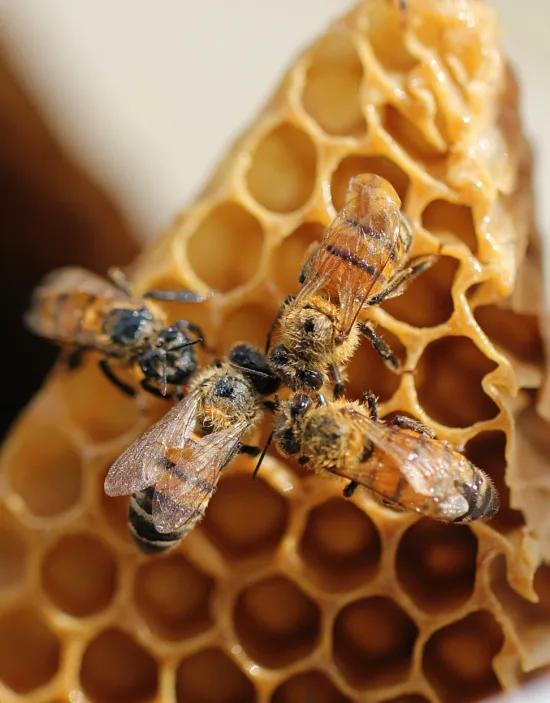

Honey Production: The How and Why
It’s no secret that bees produce honey—but do you know why? Bees live off of two types of food: pollen and nectar, both of which come from flowers. However, flowers aren’t always in bloom, which is why bees produce honey. It’s a preserved form of nectar that they can use as sustenance during winter, or anytime flowers aren’t accessible to them.
Bees make honey in their “honey stomach”; this specially adapted organ contains enzymes that break nectar down into its simpler sugars: glucose and fructose. “Forager” bees will collect nectar from flowers, which they’ll begin to break down in their honey stomachs as they transport it back to the hive. At the hive, the forager bees will pass the honey on to “house” bees. House bees will break the nectar down even further, then deposit it into the honeycomb.
While the nectar is stored in the hive’s honeycomb, the bees will help reduce the nectar’s water content by fanning it with their wings until the water begins to evaporate. Once the honey has reached the desired consistency (with a water content below 20%), the bees will seal the honeycomb with wax, fully preserving it.
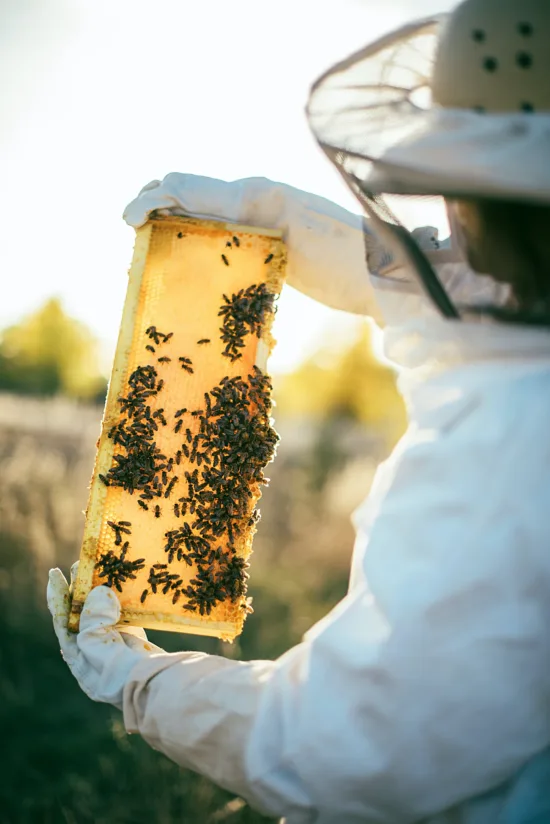

Discerning the Different Types
When you look at the honey section of your local grocery store or farmers market, you might notice that there are different types of honey, like “avocado honey” and “orange blossom honey.” These different types aren’t made by adding different ingredients and flavors to honey, though. Different types of honey, with unique aromas and flavors, can be produced by getting nectar from different plants.
Avocado honey, for example, is produced when bees feed off of the nectar from avocado tree blossoms. This rare type of honey is dark in color with a robust, buttery flavor reminiscent of molasses. Orange blossom honey, on the other hand, is lighter in color and texture, displaying bright, citrusy flavors. Other popular types of honey are wildflower honey, alfalfa honey, and even eucalyptus honey.
Raw Honey—Worth the Price?
When purchasing honey, you might be confused at how vastly it can differ in price from brand to brand. When looking at the labels, you may be asking yourself what exactly “raw honey” is, and how it differs from other honey.
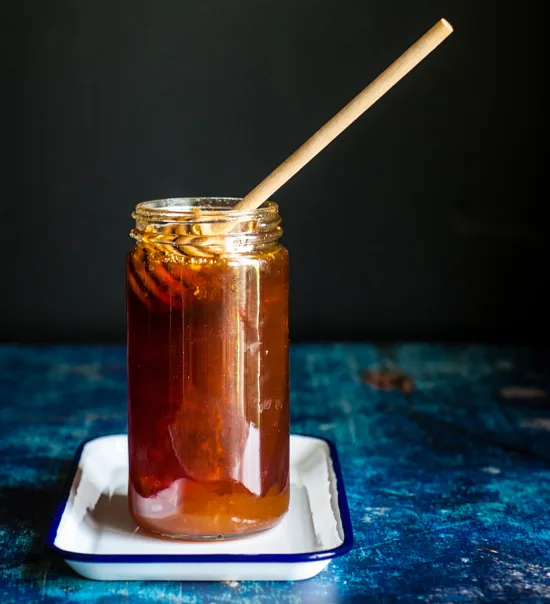

Raw honey is best described as honey sourced directly from the hive. It’s bottled with no extra processes like pasteurization or filtration. Because raw honey production requires more careful handling, raw honey is typically more expensive than other honeys. However, it’s much more nutritious, as the heat applied for pasteurization destroys most of the honey’s nutritional properties.
When choosing whether to use raw honey or not, it’s important to consider what you’re using it for. If you’re seeking out honey’s health benefits—its antioxidant, antimicrobial, and anti-inflammatory properties—you’ll be best off with raw. However, if you’re just looking to lightly sweeten a beverage and don’t want to spend as much, you’ll be fine using another type of honey.
Stay tuned for part two of our honey exploration, where we’ll discuss environmental and animal rights concerns surrounding production, and how the industry is addressing them.
ABOUT THE AUTHOR
Emily Joy Meneses (she/they) is a writer and musician based in Los Angeles. Her hobbies include foraging, cortados, vintage synths, and connecting with her Filipino roots through music, art, food, and beverage.
Subscribe and More!
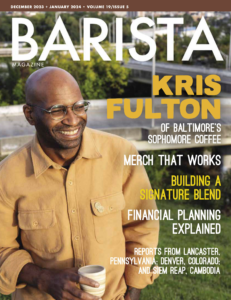

Out now: It’s the December 2023 + January 2024 issue! Read it for free with our digital edition. And for more than three years’ worth of issues, visit our digital edition archives here.
You can order a hard copy of the magazine through our online store here, or start a subscription for one year or two.
The post Know Your Sweeteners: Honey: Part One appeared first on Barista Magazine Online.

